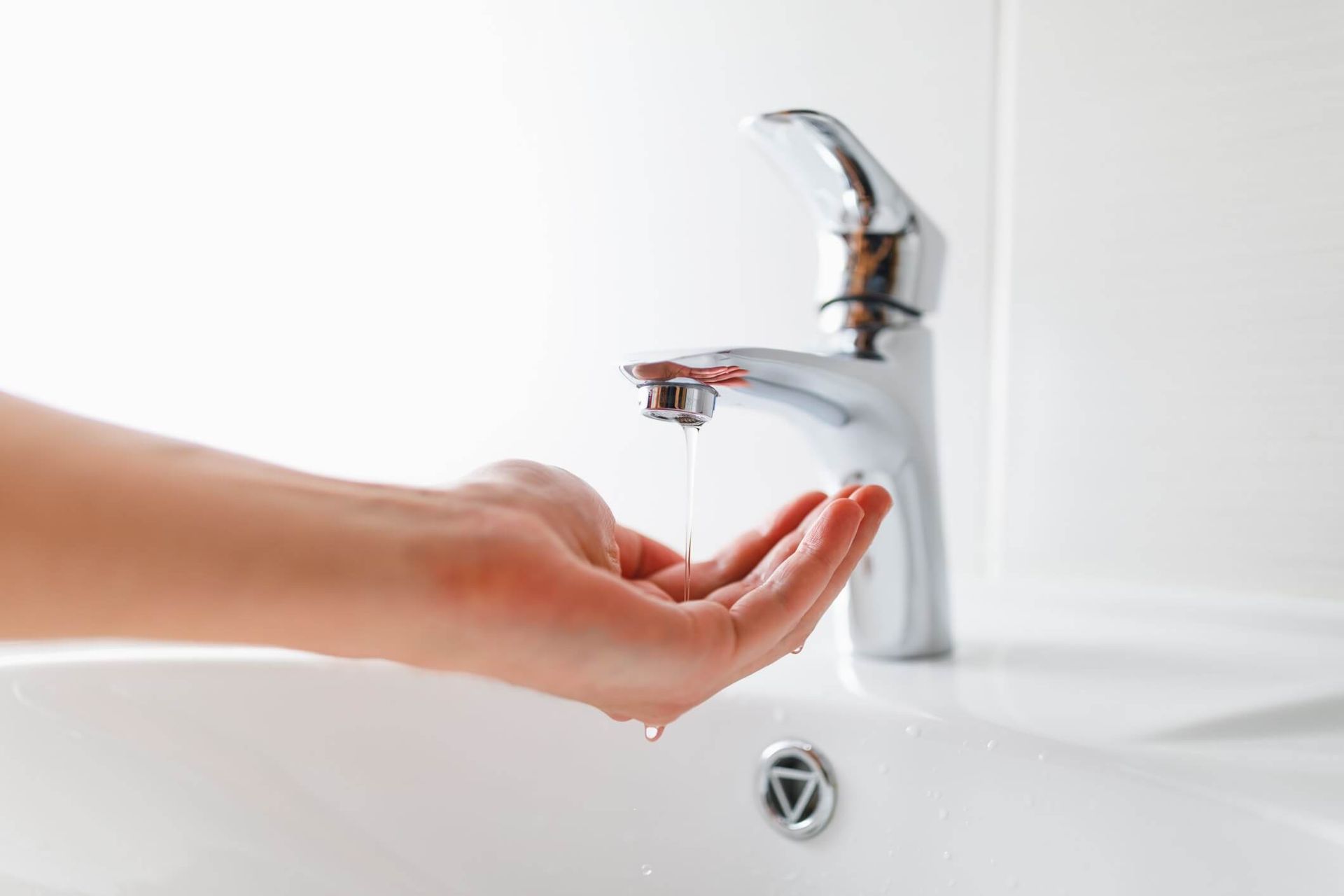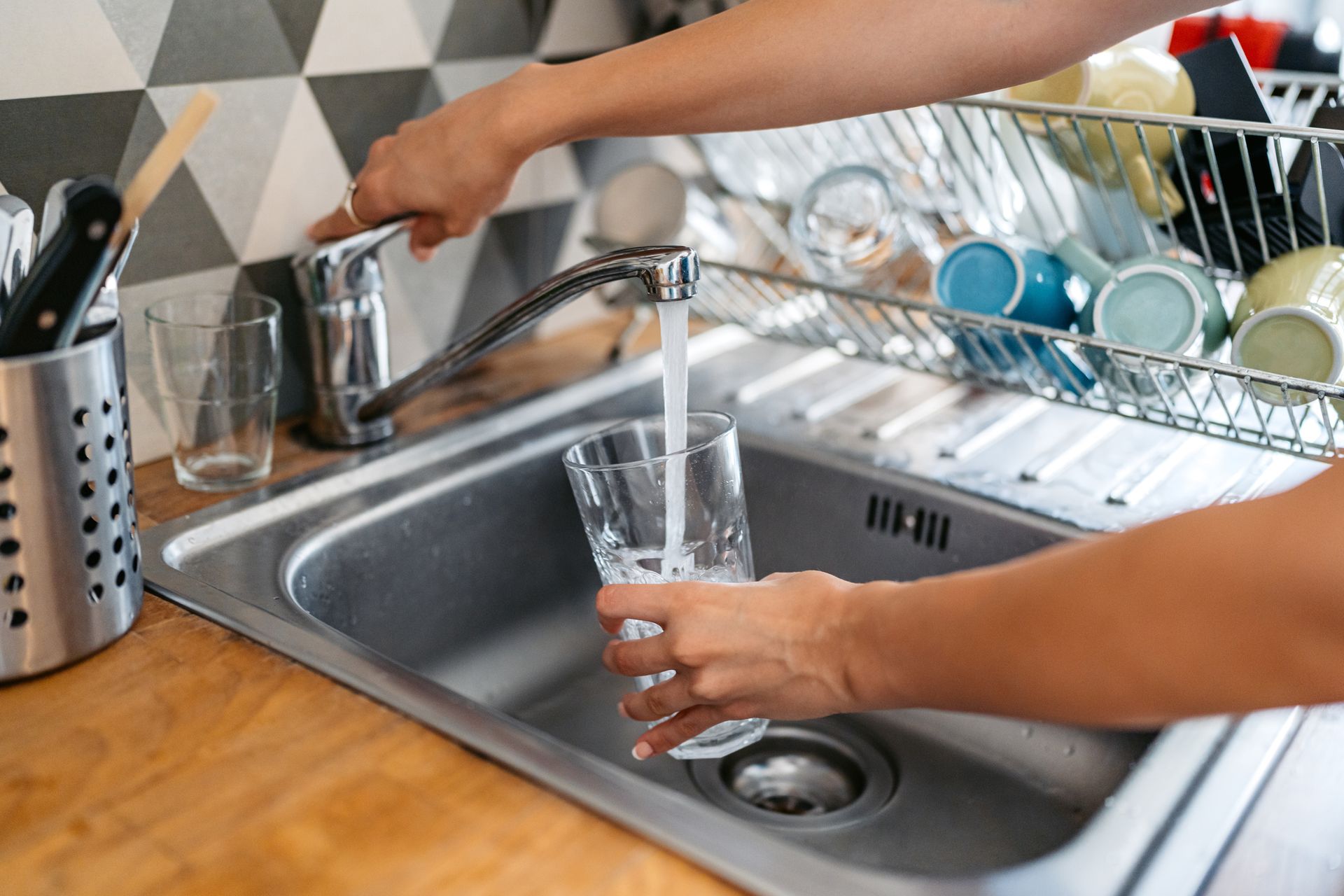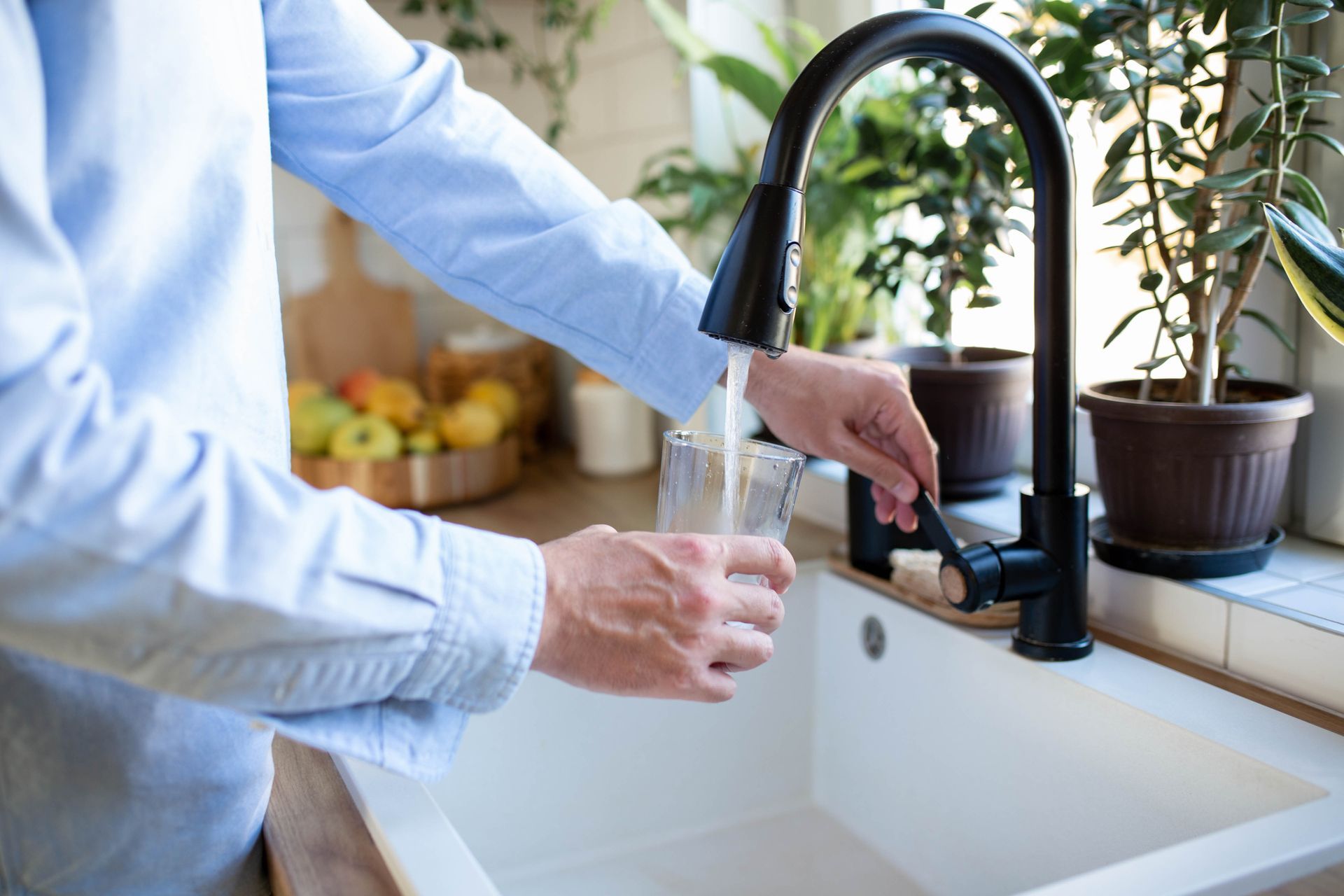Why Does Water Smell Bad From One Faucet? Expert Diagnosis & Solutions
Nothing is more alarming than turning on a faucet and being hit with a foul smell from your tap water. When water smells bad from one faucet while others in your home run clean and odor-free, you're dealing with a localized plumbing issue that requires targeted solutions rather than whole-house water treatment.
This focused problem often catches homeowners off guard because they expect water quality issues to affect their entire plumbing system. However, single-faucet odors are surprisingly common, accounting for approximately 40% of residential water smell complaints according to industry professionals. Understanding the specific causes and solutions for these localized issues can save you time, money, and unnecessary worry about your overall water supply.
Understanding Single-Faucet Water Odor Issues
When water smells bad from one faucet, you're experiencing a localized problem that's fundamentally different from system-wide contamination. This distinction is crucial because it determines both the cause and the appropriate solution for your smelly water situation.
The key to understanding single-faucet odors lies in recognizing that your home's plumbing system consists of multiple branches, each with its own potential for developing unique problems. While your main water supply may be perfectly clean, individual lines can develop bacterial growth, biofilm accumulation, or chemical reactions that create unpleasant odors at specific fixtures.
To quickly identify whether you're dealing with a localized issue, perform this simple diagnostic test: fill a clean glass with water from the problematic faucet, then step away from the sink area. If the water in the glass smells normal while the sink area still has an odor, the problem likely originates from the drain rather than your water supply. This "glass test" is recommended by water quality professionals as the first step in diagnosing single-faucet odor problems.
Compare water from different faucets throughout your home. If only one faucet produces smelly water, you can rule out issues with your main water source, whether you have city water or a private well. This isolation helps narrow down the potential causes to specific plumbing components, fixture problems, or localized bacterial activity affecting that particular line.
Immediate steps homeowners can take include checking both hot or cold water from the affected faucet to determine if the odor appears in both temperatures or just one. This simple comparison provides valuable clues about whether the problem involves your hot water heater, specific pipes, or drain components.
Most Common Causes of Single-Faucet Water Odors
Several factors can cause water smell problems that affect only one faucet in your home. Understanding these common causes helps you target the right solution and avoid unnecessary treatments that won't address the actual source of your problem.
Bacterial growth in specific drain pipes represents one of the most frequent culprits behind single-faucet odors. When organic matter accumulates in your p trap or u bend, anaerobic bacteria begin breaking down food waste and other organic materials, producing hydrogen sulfide gas and other compounds that create foul smell issues. This bacterial activity often intensifies in warm weather or when sinks aren't used regularly.
Biofilm buildup in faucet aerators and fixture components creates another common source of localized odors. These thin layers of bacteria and organic matter can develop over time, especially in fixtures with low water flow or infrequent use. The biofilm provides a protected environment where bacteria can thrive and produce unpleasant odors that seem to come directly from your tap water.
Hot water line bacteria specifically affect fixtures connected to your hot water heater or hot water tank. Certain types of bacteria, particularly sulfate-reducing bacteria, can colonize hot water systems where they interact with magnesium rod components to produce hydrogen sulfide gas. This explains why some homeowners notice rotten egg smell only when using hot water from specific faucets.
Unused or infrequently used fixtures allow stagnant water to develop in pipes, creating ideal conditions for bacterial growth and chemical reactions. Guest bathrooms, utility sinks, or seasonal properties often develop these issues because water sits in the lines for extended periods, losing its disinfectant residual and allowing bacteria growing to occur.
Damaged or deteriorating pipes serving specific fixtures can also contribute to odor problems. Corroded sections may harbor bacteria or allow contamination from surrounding soil or building materials. Additionally, "dead legs" - unused pipe sections that weren't properly removed during renovations - can become stagnant and contribute to localized odor issues.

Rotten Egg Smell From One Faucet
The distinctive rotten egg odor that smells like rotten eggs comes primarily from hydrogen sulfide gas produced by bacteria in your plumbing system. When this smell affects only one faucet, it indicates localized bacterial activity rather than a problem with your overall water supply.
Hydrogen sulfide bacteria thrive in oxygen-poor environments where they break down sulfur compounds, producing the characteristic gas that creates the rotten egg smell. These bacteria can colonize specific areas of your plumbing system, including individual pipe sections, fixture connections, or components within your hot water heaters. The gas is highly detectable - human noses can identify hydrogen sulfide at concentrations as low as 0.5 parts per billion.
Hot water heater bacteria represent a particularly common source of rotten eggs odor affecting specific faucets. Sulfate-reducing bacteria can establish colonies within your hot water tank, especially around the magnesium rod (also called an anode rod) that protects the tank from corrosion. These bacteria interact with the magnesium to produce hydrogen sulfide gas that travels through hot water lines to specific fixtures.
To determine whether your rotten egg odor originates from the water or the drain, perform a systematic comparison. Run both hot and cold water from the affected faucet, testing each separately. If only the hot water produces the odor, your hot water heater or hot water tank likely harbors the bacteria responsible. If both hot and cold water smell, the problem may involve the incoming water line or drain system serving that fixture.
The step-by-step process for isolating the source involves several factors: First, test water immediately as it flows from the faucet, then test water that's been sitting in a glass for a few seconds. If the smell intensifies when water sits, bacteria in the water line are likely producing the gas. If the smell diminishes when water is removed from the sink area, drain bacteria may be the culprit.
DIY Solutions for Rotten Egg Odors
Several effective do-it-yourself approaches can eliminate rotten egg odors from single faucets, depending on the specific source of your hydrogen sulfide problem.
Cleaning and disinfecting faucet aerators with a bleach solution addresses biofilm buildup that can harbor odor-producing bacteria. Remove the aerator from your faucet and soak it in a solution of one part bleach to ten parts water for several hours. Scrub away any visible buildup, rinse thoroughly, and reinstall. This process eliminates bacterial colonies that may be producing hydrogen sulfide gas near the point of use.
Flushing hot water lines by running water at maximum temperature can eliminate bacteria that have colonized in your hot water system. Turn your hot water heater temperature up to 160°F (71°C) - a process called shock chlorination - then run hot water from the affected faucet for several minutes. This thermal shock treatment kills bacteria in the lines and tank, though you should return the temperature to normal operating levels afterward for safety.
For drain-related odors, the classic baking soda and white vinegar treatment followed by hot water can effectively eliminate bacterial colonies in your p trap and drain system. Pour half a cup of baking soda down the drain, follow with half a cup of vinegar, and cover the drain for a few seconds to allow the reaction to work. After the fizzing stops, flush with several gallons of hot water to clear away loosened biofilm and organic matter.
These DIY solutions work best when the bacterial contamination is limited to accessible areas like aerators, shallow drain sections, or hot water lines. However, if the problem persists after trying these methods, or if multiple faucets begin developing similar issues, professional intervention may be necessary to address deeper system problems or more extensive bacterial colonization.

Sewage or Musty Smells From Single Fixtures
Sewage smell from a single faucet often indicates problems with drain systems rather than your actual drinking water supply. These odors typically result from bacterial activity in drain components or ventilation issues affecting specific fixtures.
Dry p traps in infrequently used sinks or floor drains represent the most common cause of sewage-like odors. The p trap contains a water seal that prevents sewer gasses from entering your home through the drain system. When fixtures aren't used regularly, this water seal can evaporate, allowing unpleasant odors to flow back into your living space. Guest bathroom sinks, utility sinks, and floor drains in basements or garages frequently develop this problem.
Biofilm and organic matter accumulation in specific drains creates another source of musty or sewage-like odors. Food waste, hair, soap residue, and other organic materials provide nutrients for bacteria that produce compounds smelling similar to sewage. This bacterial activity can intensify during warm weather or when surface drainage increases moisture levels around your fixtures.
Mold and mildew growth in fixture areas with poor ventilation can also create musty odors that seem to come from your water supply. Areas around bathroom sinks, particularly in spaces with inadequate air circulation, may develop fungal growth that produces earthy or musty smells that become noticeable when you use the fixture.
Simple solutions for these problems include running water regularly in all fixtures to maintain proper water seals in p traps. For seldom-used fixtures, run water for a few seconds at least once a week to prevent the trap from drying out. This practice is particularly important in seasonal properties or guest bathrooms that see infrequent use.
Regular drain maintenance using enzymatic cleaners or the baking soda and vinegar method helps prevent bacterial growth and organic matter accumulation. For persistent musty odors, improve ventilation around affected fixtures and check for signs of moisture problems that might encourage mold or mildew growth.
Chemical or Chlorine Odors in One Faucet
Strong chemical or chlorine odors affecting a single faucet often indicate recent changes to your plumbing system or temporary conditions that should resolve naturally over time.
Recent plumbing work or fixture replacement can cause temporary chemical odors as new materials off-gas during their initial use period. New faucets, supply lines, or pipe sections may release volatile compounds for several days or weeks after installation. These odors typically dissipate as the materials age and any manufacturing residues wash away.
Chlorine shock treatment affecting specific water lines can create strong chlorine odors in individual faucets. If your water provider has performed maintenance on distribution lines serving your area, or if you've had work done on your service line, elevated free chlorine levels may be present in specific parts of your plumbing system. Municipal water systems sometimes increase chlorine levels temporarily to address bacterial contamination concerns.
New fixture materials, particularly those containing plastic or rubber components, commonly produce chemical odors during their first weeks of use. Flexible supply lines, gaskets, and internal fixture components may release compounds that create metallic or chemical smells until they've been flushed thoroughly with normal use.
The timeline for these odors to dissipate naturally varies depending on the specific materials and circumstances. Most new fixture odors resolve within two to four weeks of regular use. Chlorine-related odors from municipal treatment typically clear within a few days as the water moves through your system and chlorine levels return to normal.
Intervention becomes necessary when chemical odors persist beyond expected timeframes or intensify over time. Contact your water provider if you suspect chlorine levels in your city water are abnormally high. For persistent odors from new fixtures, consult with the installer to ensure proper materials were used and consider flushing the system more aggressively to clear any residual compounds.
Professional Diagnosis and Testing
When DIY solutions fail to resolve single-faucet odor problems, professional water quality testing and plumbing inspection provide the expertise needed to identify complex issues and implement effective solutions.
Professional diagnosis begins with comprehensive water testing protocols that distinguish between localized contamination and system-wide problems. Water quality professionals can collect samples from specific faucets and compare them to your main water supply, identifying bacterial contamination, chemical imbalances, or other issues that might not be apparent through simple visual or smell tests.
Advanced testing methods for identifying bacterial contamination sources include laboratory analysis for hydrogen sulfide-producing bacteria, total coliform counts, and specific bacterial species that commonly cause odor problems. These tests can pinpoint whether bacteria are present in your water supply, hot water tank, or drain system, guiding targeted treatment approaches.
Professional inspection of individual fixture plumbing and connections reveals problems that aren't visible to homeowners. Experienced technicians can identify issues like dead legs in your plumbing system, corroded pipe sections, cross-connections between potable and non-potable systems, or improper venting that contributes to odor problems. They can also assess whether your pressure tank, water softener, or other system components are contributing to localized water quality issues.
Water testing should be conducted when odors persist despite cleaning efforts, when multiple fixtures begin developing problems over time, or when you notice changes in water color, taste, or clarity along with odor issues. Professional testing is particularly important if you have a private well, as localized contamination can sometimes indicate broader groundwater quality concerns.
The county health department can provide guidance on recommended testing protocols and certified laboratories in your area. Many water quality professionals offer comprehensive testing packages that screen for common contaminants while specifically targeting the compounds most likely to cause odor problems in residential plumbing systems.
Long-Term Solutions and Prevention
Preventing future single-faucet odor problems requires a combination of regular maintenance, strategic upgrades, and ongoing monitoring to address issues before they become noticeable problems.
Regular maintenance schedules for individual fixtures and drains provide the foundation for preventing bacterial growth and biofilm accumulation. Monthly cleaning of faucet aerators, quarterly drain treatments with enzymatic cleaners, and annual inspection of p traps and drain connections help maintain optimal conditions throughout your plumbing system. For fixtures used infrequently, establish a routine of running water weekly to prevent stagnation and maintain proper trap seals.
Installation of point-of-use filtration systems offers an effective solution for faucets with recurring odor problems. Activated carbon filters can remove chlorine, hydrogen sulfide, and many organic compounds that cause taste and odor issues. For more complex contamination, reverse osmosis systems provide comprehensive treatment at specific locations where water quality is particularly important, such as kitchen sinks used for drinking water preparation.
Plumbing system upgrades may be necessary for fixtures with persistent problems that don't respond to cleaning and maintenance efforts. This might involve replacing corroded pipe sections, eliminating dead legs in your plumbing system, upgrading inadequate venting, or installing new hot water heaters with improved bacteria-resistant designs. Professional plumbers can assess whether system modifications will provide long-term solutions to recurring odor issues.
Water quality monitoring using home test kits or periodic professional testing helps identify developing problems before they create noticeable odors. Simple test strips can monitor chlorine levels, pH, and bacterial indicators, while more comprehensive testing can track changes in your water source over time. For private well users, annual testing is particularly important to ensure that localized odor problems don't indicate broader contamination issues.
Creating a maintenance log for each fixture helps track patterns and identify potential problems early. Note when fixtures are cleaned, when odors first appear, and which treatments prove effective. This documentation helps both you and water quality professionals understand the specific conditions that contribute to problems in your home.

When to Contact Water Quality Professionals
Recognizing when to seek professional help for single-faucet odor problems can save you time, money, and potential health risks while ensuring that underlying issues receive appropriate attention.
Persistent odors that don't respond to cleaning and maintenance efforts indicate problems that require professional diagnosis and treatment. If you've tried multiple DIY approaches over several weeks without success, or if odors return quickly after treatment, the issue likely involves factors beyond simple drain cleaning or fixture maintenance.
Multiple fixtures developing odor problems over time suggests systematic issues that need professional evaluation. While isolated single-faucet problems often have simple solutions, patterns of expanding contamination may indicate problems with your water source, main distribution lines, or whole-house system components that require expert assessment.
Health concerns related to water quality in specific areas of your home should always prompt professional consultation. If anyone in your household experiences gastrointestinal issues, skin irritation, or respiratory symptoms that seem connected to water use from specific faucets, contact both your healthcare provider and water quality professionals for comprehensive evaluation.
The need for comprehensive water testing and treatment system recommendations becomes apparent when simple solutions don't address the root cause of your problem. Professional water quality specialists can perform bacterial testing, chemical analysis, and system evaluation that identifies specific contaminants and guides effective treatment strategies.
Don't let persistent water odor issues compromise your home's water quality or your family's comfort. The experienced professionals at Wragg Brothers Well Drilling have the knowledge and equipment to diagnose complex single-faucet odor problems and implement lasting solutions. Whether you need comprehensive water testing, system upgrades, or ongoing maintenance support, our team is ready to help.
Contact Wragg Brothers Well Drilling today for expert consultation on your water quality concerns. With three generations of experience serving New England communities, we're committed to ensuring your water supply meets the highest standards for safety, quality, and enjoyment.


